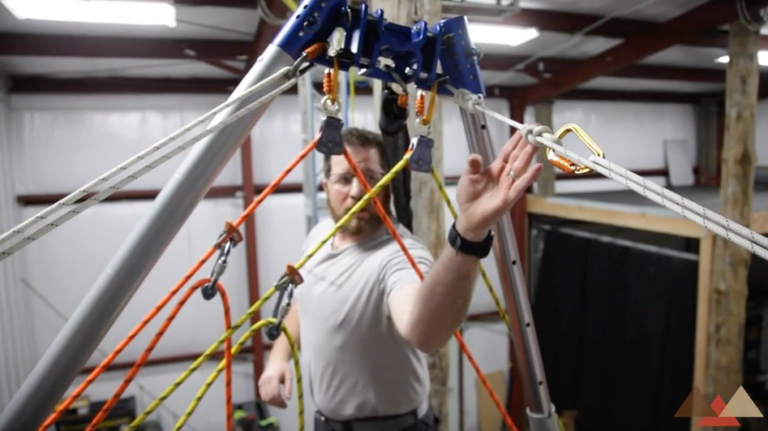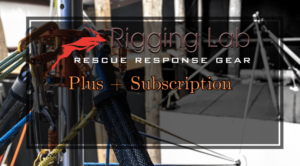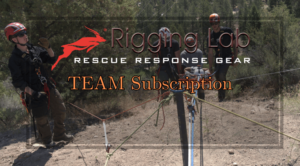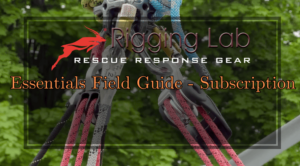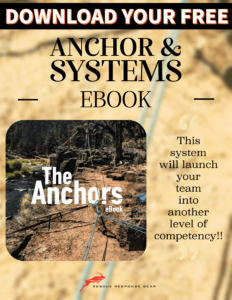Understanding High Directional Systems
Fundamental Concepts of Resultant Vector
Understanding High Directional Systems – The resultant vector is a cornerstone concept in high directional setups, representing the combined force acting within the system. This vector encapsulates both the magnitude and direction of the forces at play, which is crucial for maintaining system stability and effectiveness.
In high directional operations, the positioning of the resultant vector is paramount. For the system to remain stable, this vector must fall within the footprint of the frame or pod. This principle ensures that the forces are properly distributed and that the system remains anchored and secure throughout the operation.
Interestingly, when working with high directionals, the direction of the force often takes precedence over its magnitude. This is because the forces on either side of a pulley are equal, following the principle of mechanical advantage. Therefore, rescuers focus more on managing the direction of these forces to maintain system stability.
A practical method for visualizing the resultant vector is to imagine a line running through the center of the head pulley. This mental image helps rescuers quickly assess the system’s stability and make necessary adjustments during setup and operation.
Stability Management
Maintaining stability in high directional systems is an ongoing process that requires constant vigilance and adjustment. Rescuers must continuously monitor the position of the resultant vector throughout the operation. This is particularly crucial during dynamic phases of a rescue, where forces can shift rapidly.
One of the most critical moments for stability management occurs during edge transitions. As a load moves over an edge, the direction of forces can change dramatically. Rescuers must anticipate these changes and be prepared to adjust the system accordingly to maintain stability.
To counteract deviations and keep the resultant vector aligned, rescuers employ guiding systems. These systems provide opposing tension on the frame, effectively counteracting the compression forces and ensuring that the resultant vector remains within the desired zone. The use of guying lines, adjustable tensioners, and other stabilizing equipment allows for fine-tuning of the system’s stability in real-time.
Types of High Directional Setups
Monopods (Gin Poles)
Monopods, also known as gin poles, represent the simplest form of high directional systems. Their primary advantages lie in their rapid setup time and lightweight nature, making them an excellent choice for backcountry rescues where speed and portability are crucial.
Typically, monopods have a working load limit of around 1 kN when used as a high directional. While this may seem low compared to other setups, it’s often sufficient for many rescue scenarios, especially those involving single-person loads.
However, the simplicity of monopods comes with increased responsibility for the rescuer. Due to their single-point design, monopods require extremely careful attention to resultant forces. Proper guying is essential to maintain stability, as there’s less inherent structural support compared to multi-legged systems.
Bipods
Bipods offer a significant step up in stability compared to monopods while still maintaining a good balance of portability and setup speed. This configuration is particularly well-suited for edge transitions and scenarios where directional control is a priority.
The two-legged design of bipods provides a stable base that can handle more complex force dynamics. This stability is especially valuable when working with heavier loads or in situations where the direction of pull may change during the operation.
Despite their enhanced stability, bipods remain relatively portable. This makes them a versatile choice for rescue teams that need to balance the demands of stability with the practical considerations of transport and rapid deployment.
Tripods
Tripods represent the pinnacle of stability in high directional systems. Their three-legged design creates a wide, stable base that can handle heavy loads and complex rescue scenarios with ease.
One of the key advantages of tripods is their versatility in multi-directional rigging. The three-point structure allows for attachment points in various directions, facilitating complex rescue operations that may involve multiple ropes or changing directions of pull.
Compared to monopods and bipods, tripods generally require less guying. The inherent stability of the three-legged structure means that less additional support is needed to maintain system integrity. This can simplify setup and reduce the overall complexity of the rigging process.
Specialized Systems
Beyond the standard configurations, there exists a range of specialized high directional systems designed for specific operational needs. These custom-designed setups often incorporate features tailored to particular rescue scenarios or environmental conditions.
Some specialized systems include integrated winches, which can greatly enhance lifting and lowering capabilities. Others may feature adjustable heights, allowing rescuers to adapt the system to various terrains or structural environments.
These specialized systems often represent the cutting edge of rescue technology, incorporating advanced materials and innovative design principles to push the boundaries of what’s possible in technical rescue operations.
Advanced Rigging Techniques
Two-Tension Rope Systems (TTRS)
Two-Tension Rope Systems (TTRS) represent a significant evolution in the approach to redundancy and load management in rescue operations. Unlike traditional setups where one rope acts as the main line and another as a backup belay, TTRS actively engages both ropes in load bearing.
This dual-active approach enhances the overall responsiveness of the system. When one rope experiences increased tension, the other can immediately share the load, providing a more dynamic and adaptable rescue system. This responsiveness can be crucial in scenarios where loads may shift unexpectedly or where precise control is necessary.
The enhanced safety provided by TTRS is a key advantage. By distributing the load across two ropes, the system provides true redundancy. If one rope were to fail, the other is already engaged and can take over the full load instantly, significantly reducing the risk of catastrophic failure.
However, the implementation of TTRS requires specialized training. Rescuers must understand the nuances of managing dual tension lines, including how to balance loads, monitor both lines simultaneously, and respond to changes in tension across the system. This advanced technique, while powerful, demands a higher level of skill and awareness from the rescue team.
Mechanical Advantage Systems (MAS)
Mechanical Advantage Systems are fundamental to efficient load management in rescue operations. These systems allow rescuers to multiply their input force, making it possible to move heavy loads with less physical effort.
Simple systems, such as 3:1 or 4:1 ratios, form the building blocks of MAS. These can be easily constructed using basic rescue equipment like pulleys and prusik cords. For more demanding scenarios, these simple systems can be “stacked” or combined to create even greater mechanical advantage.
Compound systems take this concept further by combining different ratios to achieve higher mechanical advantages. For instance, a 3:1 system might be combined with a 2:1 to create a 6:1 advantage. These complex systems allow for the movement of extremely heavy loads, but they require careful setup and management to operate effectively.
The integration of progress capture devices is a critical aspect of modern MAS. Tools like the CMC MPD (Multi-Purpose Device) or traditional prusik hitches ensure that any progress made in lifting or lowering a load is maintained, even if the rescuer needs to reset their pulling position. This not only enhances safety but also improves the efficiency of the overall operation.
Applications and Best Practices
Edge Management
High directional systems play a crucial role in edge management during rescue operations. By elevating the rope system above the edge, these setups significantly reduce friction and minimize rope wear. This reduction in friction not only makes the rescue operation smoother but also extends the life of the rope and other equipment.
The improved load control offered by high directionals is particularly valuable during edge transitions. As a load moves over an edge – whether it’s a cliff face, a building rooftop, or the lip of a confined space – the high directional system allows for a more controlled and gradual transition. This smooth movement reduces shock loading on the system and provides a safer, more comfortable experience for the person being rescued.
High directionals are essential in a variety of scenarios, including cliff rescues where the edge might be sharp or abrasive, high-rise evacuations where multiple edges might be encountered, and industrial settings where complex structural elements need to be navigated.
Confined Space Rescues
In confined space rescues, high directional systems, particularly Artificial High Directionals (AHDs), play a vital role in creating safe and efficient access points. These systems can be set up to create vertical or angled entry paths, allowing rescuers to navigate tight or awkward spaces that would otherwise be difficult or impossible to access.
Tripods are often the preferred choice for confined space rescues due to their superior stability and high load capacity. The three-legged design provides a secure base over the access point, allowing for controlled lowering and raising of both rescuers and patients. Many tripods designed for confined space work also feature integrated winch systems, further enhancing their utility in these challenging environments.
The use of high directionals in confined spaces not only facilitates easier patient extraction but also improves safety for the rescuers. By providing a stable overhead anchor point, these systems reduce the risk of falls and allow for more controlled movements in and out of the confined space.
Urban Search and Rescue (USAR)
Urban Search and Rescue operations often present unique challenges that high directional systems are well-suited to address. In the aftermath of earthquakes, building collapses, or other urban disasters, rescuers frequently need to access areas with unstable or unconventional entry points.
High directionals facilitate operations in collapsed structures by providing stable anchor points where traditional anchors might not be available. They allow rescuers to create lifting and lowering systems over debris piles, through partially collapsed floors, or alongside damaged buildings.
The portability of many high directional systems is particularly valuable in USAR scenarios. Rescue teams can quickly deploy these systems in dynamic urban environments, adapting to changing conditions and newly discovered access points as the operation progresses.
Industrial Applications
In industrial settings, high directional systems find extensive use in accessing hazardous or hard-to-reach areas. Tanks, silos, and deep machinery pits often require specialized access solutions that high directionals can provide.
Industrial applications often demand systems designed for specific needs. For instance, a chemical processing plant might require a high directional system made from materials resistant to corrosive substances. Similarly, environments with explosion risks might necessitate the use of intrinsically safe equipment.
The versatility of high directional systems in industrial applications extends to their use in both rescue scenarios and routine maintenance operations. Many industrial facilities incorporate permanent or semi-permanent high directional setups as part of their safety infrastructure, ensuring rapid response capabilities in case of emergencies.
Safety Considerations
Training and Competency
The safe and effective use of high directional systems hinges on proper training and demonstrated competency. Given the complex forces at play and the potential risks involved, it’s essential that all personnel involved in setting up and operating these systems receive comprehensive instruction from qualified trainers.
Training should cover not just the practical aspects of system setup and operation, but also the underlying principles of physics that govern these systems. A thorough understanding of force vectors, load calculations, and system dynamics is crucial for making informed decisions in the field.
Competency in high directional operations isn’t achieved through training alone; it requires regular practice and scenario-based exercises. Rescue teams should engage in frequent drills that simulate real-world conditions, allowing them to hone their skills and decision-making abilities under pressure.
Equipment Inspection and Maintenance
Regular and thorough inspection of all components used in high directional systems is paramount to ensuring operational safety. This includes not just the obvious elements like ropes and carabiners, but also less conspicuous items such as vehicle hitch receivers when used as anchor points.
Inspections should follow a systematic process, checking for signs of wear, damage, or degradation. Special attention should be paid to high-stress areas like connection points and areas exposed to abrasion. Any equipment showing signs of significant wear or damage should be immediately removed from service.
Proper cleaning and storage of equipment between uses is equally important. Ropes, harnesses, and other textile components should be cleaned according to manufacturer specifications and stored in cool, dry environments away from direct sunlight and chemical exposure. Metal components should be kept free of corrosion and moving parts should be lubricated as needed.
Operational Safety
When using vehicle-mounted high directional systems, ensuring proper vehicle stabilization is critical. This may involve the use of wheel chocks, outriggers, or other stabilizing equipment to prevent any movement of the vehicle during rescue operations.
Clear and consistent communication among team members is essential throughout the setup and operation of high directional systems. This includes using standardized terminology, employing radio protocols when team members are out of direct earshot, and establishing clear chains of command for decision-making.
Safety officers should be designated for complex operations, tasked with overseeing the entire process and having the authority to halt operations if safety concerns arise. Regular safety briefings before and during operations help ensure that all team members are aware of potential hazards and their roles in maintaining a safe working environment.
By adhering to these comprehensive safety practices, rescue teams can maximize the effectiveness of high directional systems while minimizing risks to both rescuers and those being rescued.

